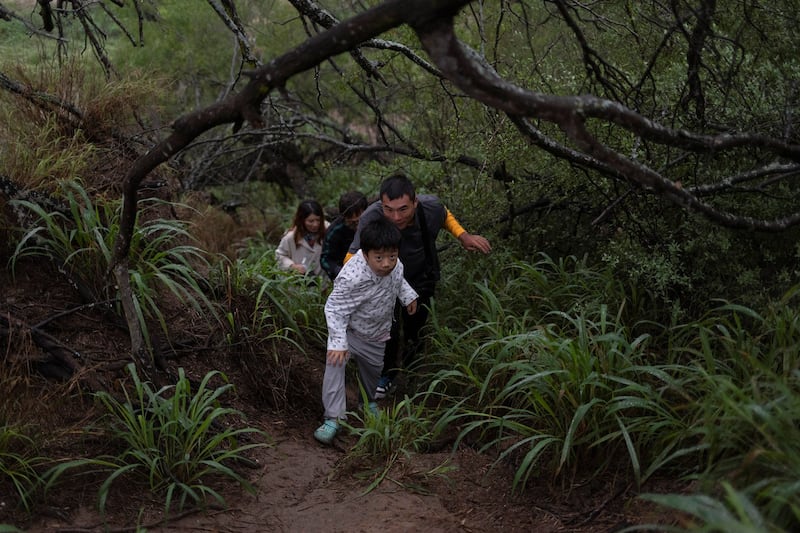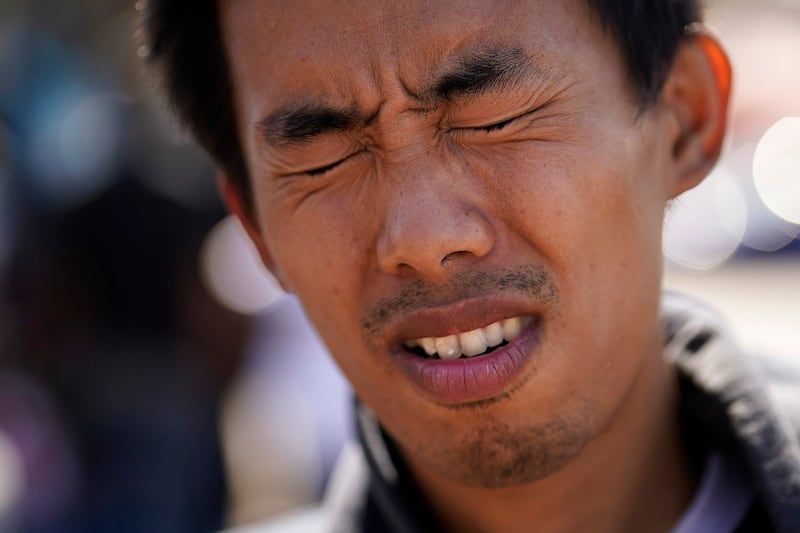The number of people fleeing China to seek asylum in the United States has spiked sharply in recent weeks, with U.S. Customs and Border Patrol reporting more than 4,000 arrests of Chinese nationals in September, a rise of 70% from the previous month.
In the 12 months to September 30, more than 24,000 Chinese nationals have made the arduous and sometimes dangerous overland journey through South and Central America to cross the border from Mexico and apply for political asylum in the United States.
It's known in China as the "run" movement.
A buzzword that uses a Chinese character that sounds similar to the English word "run," it describes how large numbers of people are leaving, or researching the best way to get out of China, with the aim of settling in a more developed country with greater freedoms.

The idea of leaving really took off during the grueling lockdowns, mass incarceration in quarantine camps and compulsory testing of Xi Jinping's zero-COVID policy, which the government ended abruptly following nationwide protests in December 2022.
U.S. Customs figures show that Chinese asylum seekers numbered in the dozens or hundreds throughout 2022, when the COVID-19 travel ban was still in effect, rising quickly into the thousands through most of this year as people started to put their plans into action.
Commentators say the movement has its roots in widespread dissatisfaction with political totalitarianism and economic stagnation under ruling Chinese Communist Party leader Xi Jinping, with the effects felt among the middle classes as well as farmers and blue-collar workers.
‘No way to survive’
A 50-something asylum-seeker from the northern Chinese city of Xi'an, who identified himself with the pseudonym Zhang Jun for fear of reprisal, recently crossed the U.S. border and made his way to New York.
He told Radio Free Asia in a recent interview that he couldn't survive in China any more.
"Why do so many people want to leave? Because there's no way to survive there," said Zhang, a laid-off former state-owned enterprise worker who once enjoyed the benefits of an "iron rice-bowl" job with healthcare, housing and pension.
Zhang's troubles began when he started petitioning for better social support after joining the hundreds of millions who were laid off from the state sector in the 1990s. He was ignored by officials, then gave up his attempt to seek redress after being locked up by the police for 15 days as a troublemaker.

After jumping from one poorly-paid gig to another, Zhang was barely hanging on when the pandemic hit the central city of Wuhan in December 2019.
Then, the authorities suddenly and forcibly demolished his home.
"We can't afford to offend them ... but can we avoid them?" Zhang thought at the time, before borrowing 120,000 yuan (about US$16,500) from a friend to make the trip to the United States.
"This society is pretty distorted – it's not like it used to be in the past," he said. "Back then, we had a low income, but we were all very happy ... and there was some fairness."
"Today's China is no place for humans – it's chaos, with no fair treatment and no human rights," he said.
Zhang said nobody takes the decision to leave lightly.
"Who would want to leave their hometown and go to a foreign country where they don't even speak the language to work, to try to make a living?" he said.
But he added: "Here, anyone can find a job if they take it seriously and aren't lazy."
Zhang said the "run" movement would gather even more momentum if current restrictions on leaving the country were to be fully lifted.
There are signs that the Chinese authorities are trying to stem the exodus, amid ongoing nationwide restrictions on passport-holders and a recent raid on a Shanghai-based immigration consultancy firm.
Yet some 15,000 Chinese nationals traveled through Panama in the first nine months of this year, according to that country's immigration data, suggesting that thousands are opting to make the dangerous mountainous jungle trek via the country’s Darien Gap.
The route is popular because Chinese citizens can freely travel to Ecuador without a visa. They then travel overland through Colombia, Panama, and the rest of Central America to get to Mexico, and then to the U.S. border.
The movement has spawned a host of specialized tips and tutorial-style videos on Tik Tok, its Chinese equivalent Douyin and social media platform Kuaishou, in which successful migrants share their experiences and encourage people back home to follow suit.

Another asylum seeker, who identified himself only by his nickname Kedi, said he had decided to leave after his friends started getting arrested for social media posts, or for selling VPN services to allow people to view overseas websites not usually visible behind the Great Firewall of internet censorship.
Kedi, a technical high school graduate, once made a decent salary of 5,000 yuan ($687) per month, but lost that job when the Chinese economy "fell off a cliff" after the pandemic hit.
He tried to eke out a living by selling snack foods, but the business failed after just a few months, and he was unable to find any other source of income.
Kedi didn't even have the option of falling back on his family because they are estranged; he is gay and they wanted him to marry a woman.
"I was born in 1987, and my family hails from a rural area, where people's thinking is pretty conservative," he said. "My family was constantly trying to push me to get married."
"I couldn't stand going on these blind dates [they set up with women] any more, so I left," he said.
Kedi set off on May 30, 2022, and now works as a masseur at a Chinese massage parlor in Los Angeles, where he makes more than U.S.$5,000 a month, he said.
Multinationals seek exit
And it's not just Chinese citizens who are planning to leave China.
A recent report from the European Central Bank found that more than 40% of multinational companies with a presence in China are planning to relocate to more politically friendly countries in the next few years, while foreign companies took U.S.$160 billion in profits out of the country over the past six quarters.
The bank surveyed 65 very large firms with a global footprint and 49% said they were looking to "near-shore", or bring production closer to the points of sales, while 42% wanted to move them to more welcoming locations.
"As to those countries which posed – or could pose – a risk to supply chains in their sector more generally, two-thirds of all respondents cited China," the bank said in a recent Economic Bulletin.
Translated by Luisetta Mudie. Edited by Eugene Whong.
